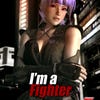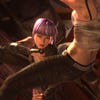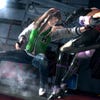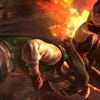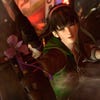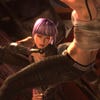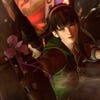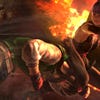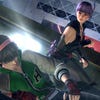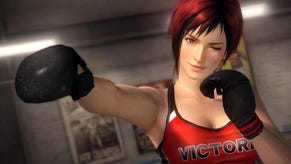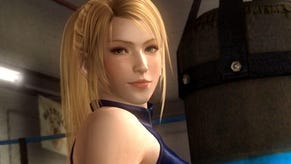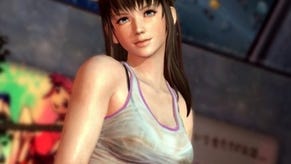Dead or Alive 5 Preview: Team Ninja Hits Back
Can Ryu Hayabusa save face after Ninja Gaiden 3?
As the first fighting game of the seventh console generation, Dead or Alive 4 didn't have to do anything particularly flashy to stand out from the crowd. The recipe for success was little more than looking pretty, offering up a familiar yet robust fighting system and topping everything off with the first Spartan appearance on the Xbox 360. But now that we're (supposedly) reaching the end of round two between Nintendo, Sony and Microsoft, the genre has pulled itself out of the gutter with a diverse range of excellent fighting games. The question is, can Dead or Alive 5 go toe-to-toe with the heavy hitters on the big screen - or should it stick to the bikinis and volleyballs?
Having spent some time with an expanded demo, it's clear that Team Ninja is sticking it what it does best - crafting a solid fighting framework that marries fast-paced action and executional accessibility with a counter-heavy twist. The basics of combat, as ever, come courtesy of the punch, kick, throw and guard buttons, and by mixing the two attacks with directional inputs, you can recite some satisfying combos that kick off with a well-timed launcher.
What separates Dead or Alive from its fighting game peers is the rock-paper-scissors dynamic that injects a heightened sense of risk into every button you press. A predictable strike can be caught and mangled with a bone-breaking hold, a gutsy throw can be stuffed with a swift strike to the face and an ill-conceived hold can be punished be throwing the opponent like a sack of economy-grade potatoes. This three-way mantra was and remains the cornerstone of the DOA experience. But while Dead or Alive 5 looks and plays very similarly to its numerical predecessor, it also offers a handful of new mechanics and a number of interesting changes.
Anyone who's played the Dead or Alive 5 demo that came with Ninja Gaiden 3 (arguably the best reason to buy said package) will know that Team Ninja originally planned to use the hold system from Dead or Alive 3 and the recent Dimensions. This has since been changed to a Dead or Alive 4 way of thinking, as while the basic high and low holds don't differentiate between punches and kicks, there is no longer a catchall counter for an incoming mid-attack - you now have to guess correctly between hand and foot.
It's a welcome move that lets strike-orientated characters, such as the silver-haired Christie and the flamboyantly dressed Zack, play a more effective mix-up game with a slightly reduced chance of being countered. Whereas for hold-heavy fighters like the burly Bayman and the dainty Leifang, their repertoire of advanced holds can still strip the opponent of substantial health with just a few good reads. And just like how Tekken embraced comeback mechanics after years of doing perfectly fine without them, so too does Dead or Alive 5 give ailing players a chance to pull one from behind.
This comes courtesy of the new Power Blow system that lets you charge a special attack that, if landed, unleashes a cinematic barrage of martial-arts excess that can knock the opponent into a Danger Zone for additional damage. In the Gaiden demo the Power Blow could be used at any point during a match, but now you have to be at 50 percent health or less. You can also vary the charge time to try and bait your opponent into a costly mistake, and although a Power Blow can be blocked, it's wiser to sidestep as it'll break your guard and leave you vulnerable.
On the face on it, the Power Blow seems to be little more than a lumbering gimmick that's only going to catch a mash-happy dabbler by surprise, but when used in conjunction with the new Critical Burst stun, its delay becomes less of an issue. It's not the easiest of mechanics to explain on paper but suffice to say that every character has at least one attack that can cause a Critical Burst when used at the end of a stun-heavy combo. Hitomi, for example, has a double punch that when landed twice in quick succession, will force the opponent into a Critical Burst with just enough time to charge and land a Power Blow.
The key point here is that the opponent can't use a hold to turn the tables once they've been stunned, and for the likes of Bayman - a character who benefits from the new mechanics significantly - it's even possible to dish out a substantial combo that's totally inescapable once the first hit has been landed. This changes the flow of the game on a number of levels as while holds used to be the 'get out of jail free card', the Critical Burst system lets you orchestrate situations that score guaranteed damage. And in DOA, that's a huge deal.
The only deal that's arguably bigger is the inclusion of Akira Yuki and Sarah Bryant from Sega's seminal Virtua Fighter series. It goes without saying that Akira is one of the most technically demanding characters in fighting game history, and while his transition from ring outs to multi-tiered arenas has thankfully softened him up a bit, many of the inputs for his shoulder barges and crafty throws are eerily similar to his VF guise. The high kicking Sarah, meanwhile, was unfortunately absent from the demo, but she's a natural fit given her love for figure-hugging leather.
The rest of the roster was made up of four men of action, including ninja buddies Hayabusa and Hayate with their wide range of ninjutsu skills, in addition to the feminine delights of Tina Armstrong and her wrestling submissions; Kokoro and her powerful elbow strikes; and poster-girl Kasumi with her raw speed and sakura petal teleports. The new arenas are also a step-up in terms of design and mid-fight functionality, and although the range of character animations isn't going to give Namco Bandai any headaches, the fluidity of movement between techniques is no less accomplished.
As compelling as Dead or Alive 5 is to play, it's hard to overlook the fact that come this September, it'll be going up against the mighty Tekken Tag Tournament 2 - a game that's all but guaranteed to steal the lion's share of the limelight on the strength of its name alone. To counteract this, Team Ninja has to release a balanced fighting game. Not just in terms of the roster, but also in the range and quality of the available game modes. If it can do this with an indispensible training room, watertight netcode and a story mode that's above average (hey, we have to be realistic) then Dead or Alive could achieve what Dimensions did on the 3DS.
When Tomonobu Itagki left Team Ninja back in 2008, there were concerns that his absence would have an adverse effect on the studio's output. In the case of Ninja Gaiden, this pessimism unfortunately came to fruition. But based on the strength of this demo, Dead or Alive 5 is shaping up to be fearsome fighter that while distinctly familiar in its overall look and feel, also switches things up with some interesting new mechanics. It's still a bouncy boob fest, make no mistake, but underneath all the saucy attire is a frantic fighting game with depth and substance.


